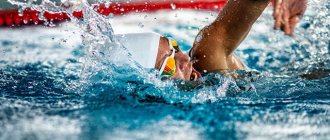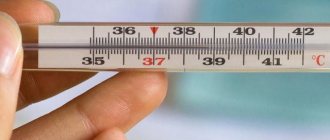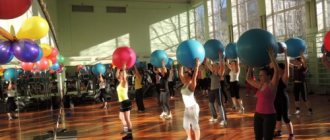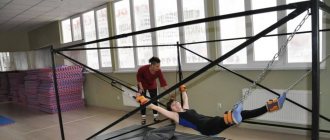Before starting a conversation about how to change the intensity of training in bodybuilding, it is necessary to define the very concept of “intensity”. In bodybuilding, intensity depends on the working weight of sports equipment or the percentage of repetition maximum (RM). The following classification of training is accepted:
- Low-intensity training - from 10 to 40% of 1RM;
- Medium-intensity training - from 40 to 80% of 1RM;
- High-intensity training - from 80 to 100% 1RM.
Taking a broader view of the concept of “intensity,” we can say that this is the amount of energy expended per unit of time, for example, one lesson or cycle.
Intensity of training in bodybuilding when gaining mass
To prevent muscles from adapting to the load, athletes need to vary the intensity of their activities. This approach to organizing the training process is called periodization. Maximum results can be achieved using the following scheme:
- 1 week - high-intensity training;
- Week 2 - classes with medium intensity;
- Week 3 - maximum high-intensity training;
- Week 4 intensity is low.
The main mistake most athletes make is keeping the intensity at approximately the same level each week.
By reducing the load every fourth week, athletes will be able to train more effectively during the remaining weeks. If you are not able to perform a certain action at the moment, it does not mean at all that it cannot be performed in the future. By using low-intensity weeks, where the muscles received significantly less workload, you will give them the opportunity to adapt to the loads received over the previous three weeks.
It should be remembered that in bodybuilding the training process is based precisely on the body’s ability to adapt to stimulating loads. However, it is impossible to stimulate adaptation and achieve it at the same time. These two processes can only occur sequentially.
When the load is reduced for a short period of time (one week), it is much easier for the muscles to adapt to the previous ones. It should also be remembered that strength gains increase after completing low-intensity training over the next week.
How to evaluate the training load and its impact on the athlete’s body
[Total: 2 Average: 3/5]
To ensure that training plans are based on modern physiological concepts, objective and subjective indicators are now widely used to assess the level of performance and its changes under the influence of the training means used.
However, simply calculating parameters such as volume (measured in kilometers or hours) is not sufficient to describe the level of psychophysiological stress experienced by an athlete. Stress caused by sports training is determined by more complex dependencies - intensity, duration (volume) and frequency of training.
To establish the effectiveness of training in practice, as a rule, the method of compiling target functions that reflect the dose-effect relationship . Changes in the increase in the trained function depending on the volume of training loads performed reflect adaptive changes in the body that occur during the training process. The determinants of these processes, according to some authors, are biochemical changes, recovery rate, risk of injury, etc. Let's look at some approaches to measuring training load.
Training impulse method (TRIMPS).
The training impulse method (TRIMPS - Training Impuls) was developed by a group of foreign sports physiologists under the leadership of E.U. Banister. The method consists of measuring a training session in units - doses of physical effort.
Training Impulse Index (TRIMPS) – the magnitude of the training load – evaluates the load using the formula: TRIMP = T (mins) x ∆HR x Y
Where: T – load duration (min), ∆HR – heart rate, Y
– weighting coefficient of a given heart rate range.
The weighting coefficient “y” characterizes the average lactate profile and is equal to 1.67 for women and 1.92 for men. The use of this method is limited by the need to constantly use heart monitors during training. In addition, this technique cannot be used to quantify strength training or submaximal running loads. Based on the lactate profile, it is advisable to select individualized coefficients that characterize the relationship between heart rate and lactate concentration for a particular athlete. The same amount of TRIMPS can be obtained from a short, high-intensity workout as from a high volume of low-intensity training.
Method of generalized training zones.
A number of researchers have used the traditional five zones of training intensity, based on different heart rates. Each zone is assigned a weighting factor, and TRIMPS is calculated by multiplying the time spent in each training zone by the corresponding factor. Here is one example of the distribution of coefficients by pulse zones.
The limitations of this method include the fact that in different subjects the anaerobic threshold is characteristic of different heart rate levels. For example, for one athlete, the anaerobic threshold occurs at a heart rate of 76% of the maximum, and for another, the anaerobic threshold heart rate is 83%. Performing 30 minutes at 78% intensity will earn each person the same number of TRIMP points (30 x 3), but the physiological stress will vary significantly.
- The first zone is, as it is commonly called, the aerobic zone, which is at the level of the aerobic threshold and below. The upper limit of this zone is the first lactate threshold (LT1), which corresponds to a lactate concentration of 2 mmol/l. As a rule, it is in this intensity range that highly skilled athletes in endurance sports carry out most of the workload. Energy, when loaded in this zone, is extracted mainly through the oxidation of fatty acids. Athletes working in this zone develop the body's ability to effectively use fatty acids as an energy source, which increases their performance.
- The second zone, adjacent or mixed, is above the aerobic threshold (first ventilatory threshold), but below the anaerobic (second ventilatory threshold). Energy supply at this intensity is provided both through the oxidation of fatty acids and with a progressive increase in the oxidation of carbohydrates. In the intensity range of the second zone, the lactate concentration reaches a level of 2-4 mmol/l.
- The third zone lies in the interval between the level of the anaerobic threshold and the value of maximum oxygen consumption (MOC). The third zone is a zone of high-intensity physical activity, where the main source of energy is carbohydrates obtained through the breakdown of glycogen. Competitive activity is close in intensity to the third zone. For highly qualified professional athletes, about 20% of the entire training load occurs in the third zone.
- Supramaximal load lies outside the MPC value . At this intensity, the anaerobic mechanism of energy supply predominates. This intensity is close to the maximum possible, and can be maintained by the athlete for a relatively short time.
From a practical point of view, the above zones have fairly wide boundaries. In Norway, a country with a traditionally strong cycling discipline, it is customary to divide intensity zones in a more detailed manner, without losing the general outline of physiological principles. Their classification is dictated more by practical needs than by physiological justifications. According to the Norwegian scheme, the zone at and below the aerobic threshold is divided into two subzones 1 and 2, respectively.
- Zone number one is usually called recovery zone.
- Zone number two is called moderate. As a rule, long rolling-in training is carried out in the temperate zone.
- Zone number 3, the mixed zone, is light in intensity.
- Zones 4 and 5 lie above the anaerobic threshold and have narrow ranges. These zones are usually called the zone of medium and high severity.
- Anything above the intensity of the VO2max level is in the supramaximal zone, the anaerobic zone. With this intensity, accelerations of short duration are usually made and prolonged stay in this zone leads to fatigue or, in the worst case, overwork.
Classification of the severity of physical activity is necessary for a more accurate analysis of preparation and drawing conclusions. According to the famous sports specialist from Norway, Stephen Seiler, from the point of view of physiological reactions, only 3 intensity zones matter:
- to the aerobic threshold (the average athlete has a lactate concentration of 2 mlM/l)
- mixed zone (between aerobic threshold and anaerobic threshold, lactate 2-4 mlM/l).
- after the anaerobic threshold (lactate >4 mlM/l).
Each zone is assigned a coefficient (1,2,3, for example). The time spent in each zone (information is available in modern sports cardiomonitors - Polar, Garmin, Ciclosport, etc.) is multiplied by a coefficient and added together. This is the training load according to the modified generalized training zone method. Another name for the numerical training load estimates derived from the three zones is Lucia's TRIMPS.
The so-called “session-goal method”.
An alternative approach to measuring time spent in different intensity zones was proposed in the work of Norwegian specialist Stephan Seieler. Unlike the approach based on importing training data from sports cardiomonitors, in the training goal method each training session (or part of a session, for example, interval work, warm-up-cool-down) is assigned a corresponding number, based not on the actual accumulated time in the zone, but based on from the goal set by the trainer to conduct a training session or part of it in the target intensity zone. The comparative analysis carried out in this work showed that these two methods give different estimates of the time spent by the athlete in intensity zones. This is due, firstly, to the inertia in the response of the cardiovascular system to increasing intensity. Secondly, at submaximal speeds of short duration, heart rate ceases to be a valid measure of the degree of training stress experienced by the athlete.
A limitation of this basic and generalized training zone method is the use of a linear relationship between weighting coefficients and heart rate, which does not accurately reflect physiological responses at speeds higher than the anaerobic threshold. In addition, the selection of weighting coefficients is subjective. Finally, weighting coefficients characterize a certain range of intensities described by heart rate. Meanwhile, the load at the beginning of the zone and at the end of the zone are obviously associated with slightly different levels of physiological stress, but the magnitude of the measured training load will be the same.
At the same time, an increase in the average heart rate for a workout by one beat per minute can transfer the entire workout from one zone to another, higher one (and the workout time will receive a larger weighting factor). However, from a physiological point of view, these training loads are almost identical. .
A common drawback of all approaches using the training pulse technique is also the reduction of the training load to a single number, without regard to the energy system involved in performing the training or competitive work. For example, a 3K run at a low intensity might produce TRIMPS=15 for some athlete. The same number of TRIMPS as a competitive 1500m run. This method does not take into account the specific training effects associated with energy systems. Nevertheless, this group of methods has become widespread as the main method for measuring training and competitive load.
It should be noted that in real conditions of training and competitive activity, the use of traditional instrumental methods is associated with significant difficulties. Therefore, psychometric methods, which make it possible to integrally assess the loads performed, are attracting increasing interest from sports specialists. The assessment of an athlete's own efforts quite accurately reflects the individual perception of the intensity of the training load. This assessment can be expressed using numerical scales (Borg scale, RPE scale, “rate of perceived exertion”) .
As the use of this method has been shown in comparison with subjective assessments of physical activity, the use of a large volume of low-intensity loads in training practice underestimates the level of physiological stress using the generalized zone method in comparison with subjective assessments of RPE. Comparing athletes who spend a lot of time in high-intensity training regimes leads to an overestimation of the level of training load by methods using heart rate compared to quantification methods based on the use of subjective self-assessments.
At the same time, it should be taken into account that in Russian-language and foreign publications the terminology used differs significantly, which can lead to discrepancies. It seems that there is an urgent need to streamline and unify definitions in the field of sports science. An accurate understanding of the terms allows us to adequately assess the achievements in this special field of knowledge, while at the same time, the incorrect use of terms or the accumulation of unnecessary terms only removes us from reality and hinders the development of this discipline.
In the domestic literature devoted to the problem of quantifying training and competitive loads, the concept of “sports readiness” is widely used, which includes fitness, functional readiness, and sports form. In a broader sense, the structure of an athlete’s preparedness includes technical, physical, tactical and mental elements. At the same time, some experts emphasize that the mentioned conditions, although not synonymous, adequately reflect the course of adaptive processes to stress.
Sources of information: Cejuela-Anta R, Esteve-Lanao (2011), Hausken K (2014), Garcia-Ramos A (2013), Geiger G (2010), Neborskaya K.S., Kurashvili V.A. (2012, 2013, 2015), Andersson E, Pellegrini B, Sandbakk O, Stüggl T, Holmberg HC (2014), Alekseev V.M., E.B. Akimov (2008), Losnegard T, Hallén J (2014), Kozina Zh., Ermakov S., Prusik K (2011), Akimov E.B., Grushin A.A., Alekseev V.M. (2006), Borresen and Lambert (2008), Edwards (1993).
Intensity and volume of training in bodybuilding
Thanks to the intensity and volume of training, the athlete can objectively evaluate his results and control the training process without crossing the line of overtraining.
To put it simply, the athlete needs to know what average weight was used and how many kilograms were lifted during the session. For example, you performed an exercise in warm-up sets with a weight of 60 kilograms, performing 12 repetitions. For the third set, the weight was increased to 80 kilograms and the number of repetitions was reduced to 10. In the fourth set, you worked with 100 kilograms for 8 repetitions. The final approach was the fifth approach, in which the weight of the sports equipment was 120 kilograms with 6 repetitions. If you sum up the entire load over five sets, then the total training volume will be 3760 kilograms.
After this, you need to determine the average weight used during the exercise. To do this, divide the total volume by the number of repetitions in all sets. In our case, the average weight will be 78 kilograms. This will allow you to control the intensity of your workouts and make progress permanent.
How to change the intensity of training?
Now we should consider several simple but very effective ways to increase the intensity of exercise.
Reducing the duration of rest
This is the easiest way to increase the intensity. Reduce the working weight by 5-10 percent, while leaving the number of sets and repetitions unchanged. At the same time, also reduce the pause time between approaches to 30 seconds. It is enough to train in this mode for a couple of weeks, after which you can return to your usual training.
Supersets
The superset method involves training antagonist muscles.
These are muscles that perform opposing functions, such as the hamstrings and quadriceps, triceps and biceps, chest muscles and latissimus dorsi. Having chosen one exercise to train each muscle from the indicated pairs, you should do one approach from them. In practice it looks like this. You chose push-ups (triceps development) and machine curls (biceps).
After this, you need to perform eight repetitions of arm curls and do 8 push-ups without pausing. Perform about 5 similar approaches. It should also be remembered that it is recommended to use supersets for each pair of antagonist muscles no more than once per week.
Forced replays
A very effective way to increase intensity when used, you will need the help of a friend.
For example, let's say you did 8 reps of biceps curls. When you feel tired in your muscles, you perform one more “extra” repetition. However, even after this the exercise is not completed. You need to smoothly, while controlling the movement, lower the sports equipment and begin to perform the tenth repetition, where you will be slightly assisted by a friend. This way you can complete a couple more repetitions.
Negative repetitions
As with forced reps, performing negative reps will require the help of a partner.
The difference between these methods of increasing the intensity of training is that your friend will lift the sports equipment instead of you, and you will only have to perform the negative phase (lower the equipment). Negative repetitions for various muscles should be performed no more than once per month. You can learn more about changing the intensity of training from this video:
Anaerobic exercise
As you understand, with this type of training, oxygen is not a priority. The purpose of such loads is completely different. The pulse increases to 180 beats per minute.
Examples:
All types of strength training, weight lifting, short distance running, etc.
Agree that under such loads it is very difficult to breathe, and sometimes it is simply necessary to hold your breath for a while. I'll start with the disadvantages of such exercises.
Minuses:
- With this type of load, the body does not have time to spend enough calories, because. The duration of such exercises is usually not long (unless of course you are an athlete).
- Inability to burn fat during exercise.
Pros:
- Of course, the goal of such training is to increase muscle mass and this is a big plus.
- The more muscles there are in the body, the more calories are spent feeding them.
- Develops strength and endurance.
- A huge plus: after oxygen starvation during training, a period of oxygen debt begins after strength training. At this time, fat begins to burn with excess oxygen for a long time after anaerobic exercise.











